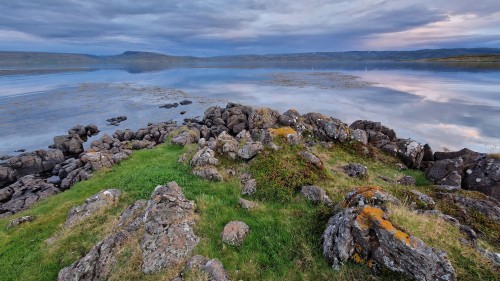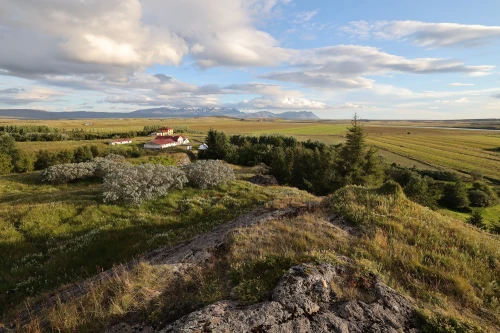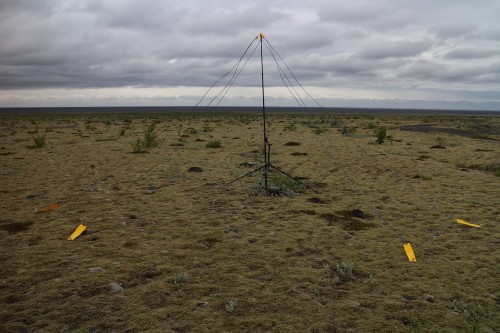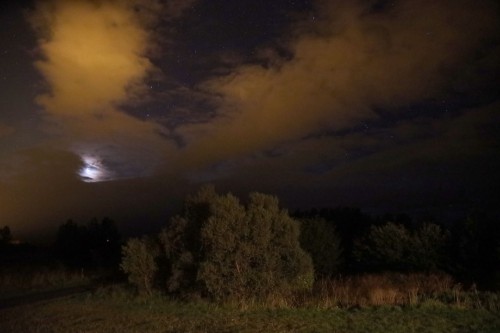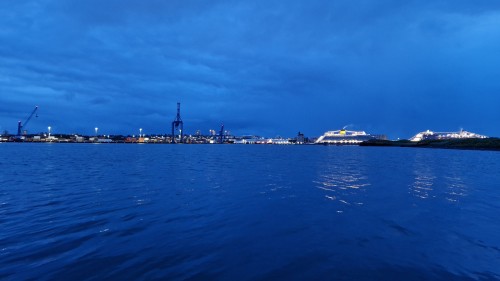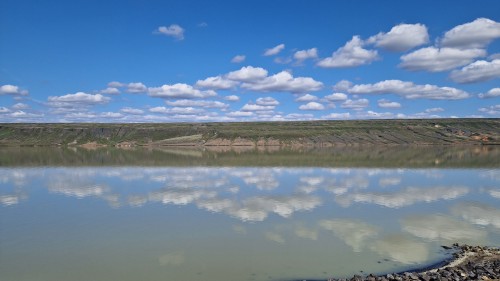Skorradalsvatn lake is located in the western part of Iceland, about an hour’s drive from Reykjavík. In the winter of 2023, I had the opportunity to record under the ice under ideal weather conditions. That was in good wind and good frost after 2-3 weeks of frost.
The winter of 2023 to 2024 was similar in many ways when looking at temperature numbers, but I only managed to record under the ice once. It was calm weather and the ice therefore did not make any sounds.
But then just a few days before the spring arrived there was one windy weekend so I made a trip to the lake even though I knew the frost had only lasted more than a week.
When the lake was reached, the ice was solid, but quiet in all this the wind, which indicated that it could be soft and not human-proof. Among the banks were many polynyas with broken ice. This broken ice was turbulent due to currents and under waves from the ice-covered water.
It was therefore stupit to try to get out on the lake, even though the ice seemed thicker there. I was also traveling alone, so no risks were taken this year.
This turbulent dancing ice in the polynyas makes pleasant natural music. So I had not come to the place to do nothing. There was considerable wind or about 12-20 m/sec. But what saved me was a wooded mountainside behind me so the wind was not constant, but occasionally came in with strong gusts.
The wind made a lot of pink noise in the forest. Quiet microphone was therefore not important. Two cardioids would have been the best choice for this project, but I did not have them in a good windshield. I simply chose the one that suited the weather best. It was my home-made Primo EM172 Binaural/baffled stereo microphone which I put on ice close to the one polynya.
When I got home, things got worse. The gusts had been so strong that even my best set of mics for these conditions failed.
I don’t have Advanced Izotope RX, so I don’t have the De Wind plugin, which is sorely missing from the RX Standard version. So I got my soulmate in sound, Buzby Birchall to run the recording through his RX De Wind software. The result was interesting and made me feel like I didn’t really need to own or use the RX De Wind. After I had set the HPF on the original recording to 111Hz / 1.7oct, the recording was „no worse“ than the one that had received the RX De Wind treatment. However, you could clearly hear that the HPF recording had a bit more wind noise below 200Hz, but on the other hand, other details sounded somehow better and tighter than on the De Wind recording. When inspecting the Spectrogram, it was clear from the De wind recording that frequencies below 100Hz had somewhat deteriorated, also slightly below 1.2Khz. This visible attenuation was not audible in all headphones, but was audible in the HD650 headphones at 24bit/48Khz.
Below are both the HPF version and the DeWind version.
Feel free to judge the difference and comment below.
Quality open headphones are recommended while listening at low to mid volume.
If the media player doesn’t start to play, please reload this individual blog in a new tab or frame.
HPF file (mp3 256kbps / 33.3Mb
DeWind file (mp3 256kbps / 33,3Mb)
Recorder: Zoom F3
Mics: DIY Stereo mic. Double Primo EM172 capsules in AB baffled/binaural setup
Pix: Samsung G22
Weather: Cloudy, wind between 12-20 m/s, about -5°C
Location: 64.513802, -21.410157

